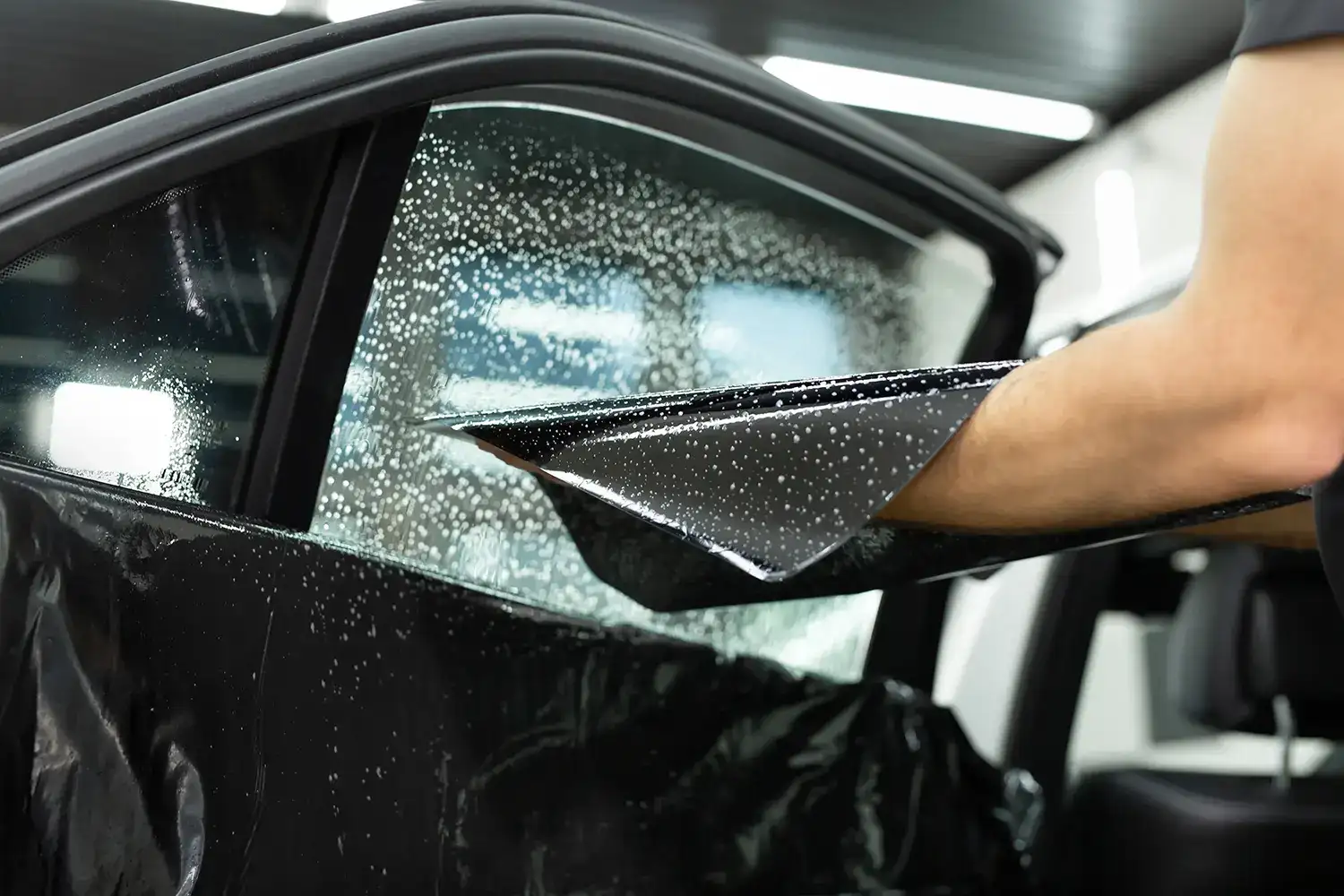The Top Factors to Think About Window Tinting for Your New Car
The Top Factors to Think About Window Tinting for Your New Car
Blog Article
The Process of Professional Window Tinting Explained
From selecting the right movie type to the careful prep work of windows, each action plays an essential function in attaining a remarkable application. Adhering to these initial preparations, the cautious cutting and application of the film demand accuracy to prevent imperfections.
Picking the Right Window Movie
The initial consideration is the type of film, which can range from dyed, metalized, to ceramic movies (window tinting). Dyed films mainly offer privacy and aesthetic enhancement, while metalized films show heat and UV rays, enhancing power effectiveness.
Following, consider the film's Visible Light Transmission (VLT) percentage, which determines how much light enters the space. A reduced VLT supplies higher privacy and warm rejection but may decrease natural light considerably. Furthermore, the film's solar heat gain coefficient (SHGC) is crucial; a reduced SHGC shows much better thermal performance, helping to maintain indoor comfort.

Preparing the Windows
Once the ideal home window film has been selected, the following step is thoroughly preparing the home windows for installation. This prep work is crucial for attaining optimum bond and making sure a perfect appearance post-installation.
The first job involves cleaning up the windows diligently (window tinting). A top notch glass cleaner is essential, ideally one that is ammonia-free to avoid harmful any home window seals or color products. Making use of a lint-free towel or paper towels, service technicians must remove any type of dust, dirt, or oil, paying special focus to the edges and corners where particles commonly accumulates

Cutting the Film
A specific technique to cutting the movie is vital for ensuring a best fit on the ready windows. This step calls for both skill and focus to information, as mistakes can lead to unattractive gaps or overlaps that concession the visual and practical top qualities of the tint.
Prior to cutting, the expert should determine the home window dimensions accurately, making up any one-of-a-kind shapes or contours. It is suggested to utilize high-grade home window film, as this product tends to be much more flexible throughout the cutting process. The movie is commonly laid flat visit this site right here on a clean, smooth surface area, and a sharp energy blade is employed to guarantee tidy edges.
To achieve ideal outcomes, many professionals make use of themes produced from previous installations or utilize software program to create precise patterns. An usual method includes including an added margin to the template, allowing for modifications during the application phase.
In addition, cutting the film in a controlled environment minimizes the risk of pollutants affecting the sticky side. By sticking to these careful techniques, home window tinting specialists can make certain that the film not just fits flawlessly but likewise does successfully gradually, improving both appearance and functionality.
Applying the Color
After diligently reducing the film to the appropriate dimensions, the next step entails using the color to the window surface. This procedure begins with making sure that the window is clean and free from any dirt, debris, or residues that might impact adhesion. A specialized cleansing option is usually used, complied with by complete drying out with a lint-free fabric.
Once the surface area is prepared, the installer will very carefully position the color blog movie versus the glass. It is essential to straighten the film accurately to stay clear of misplacement, as any type of errors can cause an amateur look. To promote this, the installer might use a light haze of application service on the adhesive side of the movie, permitting mild repositioning if needed.
Using a squeegee, the installer will certainly after that start to push the film onto the glass, functioning from the center in an outward direction to get rid of air bubbles and make certain a company bond. This method is essential, as it assures a smooth and perfect coating. Throughout the application, attention to information is crucial to avoid folds or flaws, ensuring that the tint not just enhances appearances yet likewise gives the desired performance.
Last Evaluation and Treatment
The final inspection is a vital action in the window tinting procedure, ensuring that the setup fulfills both visual and useful requirements. Throughout this stage, experts thoroughly examine the installed tint for any blemishes, such as bubbles, folds, or misalignments. A thorough assessment likewise consists of examining the adherence of the movie to the glass, as well as its uniformity and overall appearance.
After the evaluation, appropriate treatment and upkeep instructions are offered to the client. It is necessary to educate them concerning the advised timeline for cleansing the colored home windows, generally recommending a wait of a minimum of one month after setup to enable the sticky to heal fully. Clients try this out should be educated on ideal cleansing items and methods, emphasizing the evasion of ammonia-based cleansers that can harm the tint.
Furthermore, professionals should advise consumers on the significance of regular upkeep to extend the life of the tint. This includes routine look for indications of wear or damages and responding quickly to any issues. By ensuring a comprehensive final inspection and giving clear treatment guidelines, home window tinting experts improve client satisfaction and the long life of their work.
Conclusion
The expert window tinting procedure includes numerous crucial steps that make sure high-grade results. Choosing the ideal film type, preparing the home windows diligently, properly cutting the film, and using it with accuracy are important for accomplishing a remarkable coating.
Report this page